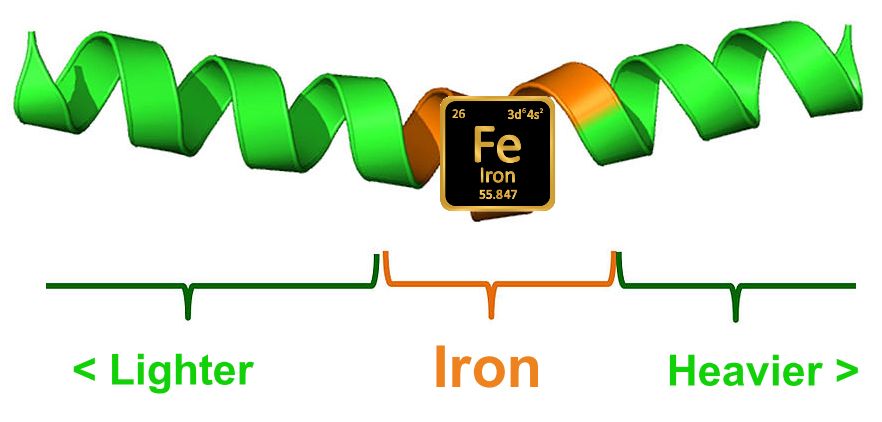The Periodic Line – with Iron in the middle
Iron, that large ball of hot stuff you are living on, and iron that large ball of hot stuff that makes you live, is the measure of all things. It should be placed firmly in the middle of a “periodic line” to help teach nuclear physics. Rather than be thrown somewhere inside a confusing periodic table, used to teach chemistry.
Why?
Because you have to add energy to “fuse” all of the elements up to iron, and you have to take energy away in order to, urr, “fission” all elements after iron.
So from a nuclear perspective, iron is central. It is the most stable element and is least willing to be synthesised into other elements. After all, given the right amount of energy, if the other elements could slide up or fall back to iron, they probably would. Maybe 😉











Iron giveth and iron taketh away. Although iron is an essential mineral, much of it is extremely toxic. Free iron in the blood reacts with peroxides to form free radicals that damage DNA, protein, lipids and other cellular components, leading to illness and sometimes death. Twenty milligrams of iron per kilogram of body weight is toxic, while 60 milligrams per kilogram is lethal.
Sure does, its the ultimate giver and taker. I don’t think it gets enough credit. Maybe the idea of a 1-dimensional line with iron in the middle is a good way to represent it, even if it gives chemists the hump.
“The Atomic Number 26 is formidable. If there are 26 Protons and 26 Neutrons in the Atomic Nucleus, there is a perfect Balance between exchange of Photons and Gluons. Nature has somehow chosen the number 26 to be unbreakable.”
I got this quote from Quora. https://www.quora.com/Why-can-elements-heavier-than-iron-only-undergo-fission-whilst-elements-lighter-than-iron-can-only-undergo-fusion
Wow, I so didn’t realise this was the case. So linking to where I landed when Googling it. On stack exchange, someone said this…
“Iron is a “special” element because of its nuclear binding energy. The very basic idea is that when you fuse two light elements together, you get a heavier element plus energy. You can do this up to iron. Similarly, if you have a heavy element that undergoes fission and splits into two lighter elements, you also release energy. Down to iron. You can see this in the plot shown in the wiki article I linked. The physical reason for this has to do with the balance between nuclear forces and the electromagnetic force.
Due to the way these energies work, and because iron is thus thought of as the most stable, if you want to get energy from fusion or fission, your best bet is to use atoms that are farthest away from iron — very light (like hydrogen) or very heavy (like uranium).
As a side note, this is also why Type 2 supernovae happen — the star can no longer gain energy from fusion because it can’t fuse past iron, so the outward pressure from energy generation stops and the star collapses.”
FE(k) nice idea. And the helictical line could be uncoiled just enough, in the right places, so that related elements sit beside each other – like groups of vertical columns in the periodic table, which show similar physical or chemical characteristics of the outermost electron shells of their atoms.